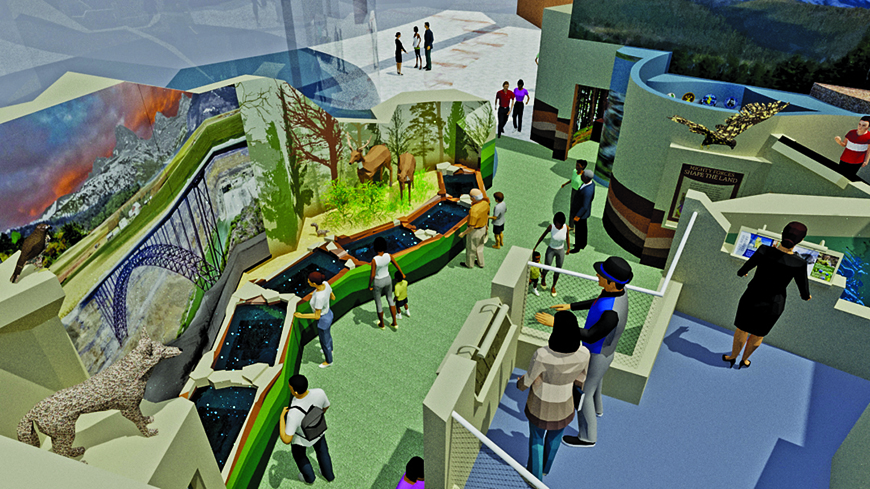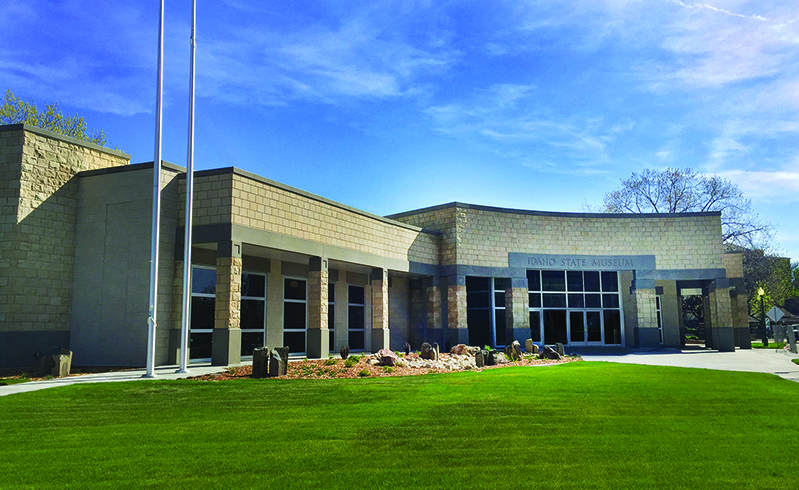The public has waited for years to peek inside the bigger and more robust exhibits promised by the Idaho State Museum since it closed to undergo a $17 million expansion. That wait will soon be over. Nobody is more anxious to see the museum reopen than the woman overseeing the project, Idaho Historical Society Executive Director Janet Gallimore. “You only get one chance every 65 years to do this,” she said. “If you’re going to create a state museum, you want to do it right.”
Located in Boise’s Julia Davis Park, the museum closed in summer 2014 and is now slated to reopen in late summer or early fall. When it does, visitors will take in a thoroughly modern museum experience chock full of multimedia displays, interactive exhibits and hands-on activities for children.
State Historian Keith Petersen, who wrote the displays after working with about 50 historians from around the state, said the new museum will reward visitors’ patience.
“We’ve never had a museum like this in the state,” he said. “Certainly our facilities were old and the exhibits were dated. People will see something totally new. It’s a really exciting time for Idaho.”
The expansion will add about 13,000 square feet and include a new store, space for traveling exhibits, two classrooms, and a community room that will be available to rent for events.
Rather than lay out exhibits in historical order, the museum was designed around two themes that touch every aspect of Idaho’s history: how humans and the land influenced each other, and how water and its many uses shaped each region.
The development team worked with the five federally recognized Native American tribes in Idaho, as well as one from Utah, to build the exhibits dedicated to the tribes’ histories, and conservation efforts. The crown jewel of those efforts, and one of the most significant in the museum, is a small theater showing the animated origin stories of each tribe, narrated by their elders.
The museum will feature 23 multi-media displays that Gallimore said will help kindle understanding for major past events, such as the 1910 Big Burn fire that consumed nearly 5,000 square miles of forest in the West, including in Idaho. A video display will show the confluence of factors that led to the conflagration: the land drying, followed by lightening cracking down at several points, followed by fires sparking and the wildfire erupting. A wave of heat will emanate from the display, turning the experience from theoretical to visceral. The exhibit then explains how the Big Burn influenced the National Forest Service’s policy of fighting all wildfires that permeated U.S. forest management for a century before the strategy changed in recent years.
The old exhibits were mostly written to a fourth-grader’s reading level. For the new museum, the planning team sought input from Chris Taylor, who supervises science and social studies curricula at Ada County School District, to ensure the new museum had exhibits tailored for different grade levels and different subjects.
“We tried to answer questions, like, ‘How can we take eighth-grade students learning earth sciences and geology to the museum to do some exploring?’ ” Taylor said. “How can we bring environmental science students in 10th or 11th grade to look at an exhibit? We’re trying to incorporate not just Idaho history, but different disciplines as well.”
The years-long planning process will be Petersen’s last hurrah as state historian. He’ll step down satisfied that he and the hundreds of others involved in the planning and input-gathering for the project will result in a jewel for the state. “I’m a museum person,” Petersen said. “Museums offer an entry into teaching history you can’t get anywhere else. It’s not books. It’s not TV. It combines stories with artifacts never seen before because we couldn’t get them out of storage, and with incredible photography from repositories and photographers from around the nation. It’s cool stuff.”
Taylor fondly remembers his grandfather taking him to famous museums in Pittsburgh when he was a boy. “I hope our new museum will bring that same love and passion when parents take their kids as it did for me,” he said. “To me, this is a world-class museum.”

A rendering of the future “Origins” exhibit. Rendering courtesy of Idaho State Historical Society
New Exhibits at ISM
Boomtown: Located downstairs, the exhibit will encourage children age 7 and younger to tackle activities replicating several professions of the pioneer days, including a miner and train engineer.
Turn off Shoshone Falls: How Idahoans interact with land is largely shaped by how water is used for irrigation, drinking, storage, transport and recreation around the state. This exhibit allows visitors to shut off the water flowing down Shoshone Falls and then see on multimedia displays how the crops, dairies and cities downstream are affected, showing the complex relationship between humans and the land and teaching about the region’s water management strategies.
History Lab: Visitors will use multimedia displays to complete tasks by finding information in primary sources, giving a first-hand experience in researching while learning about the state’s history.
Stories from Idaho: This exhibit will tell personal stories from a diverse collection of Idahoans, giving insights into their lives and place in the state’s history.

